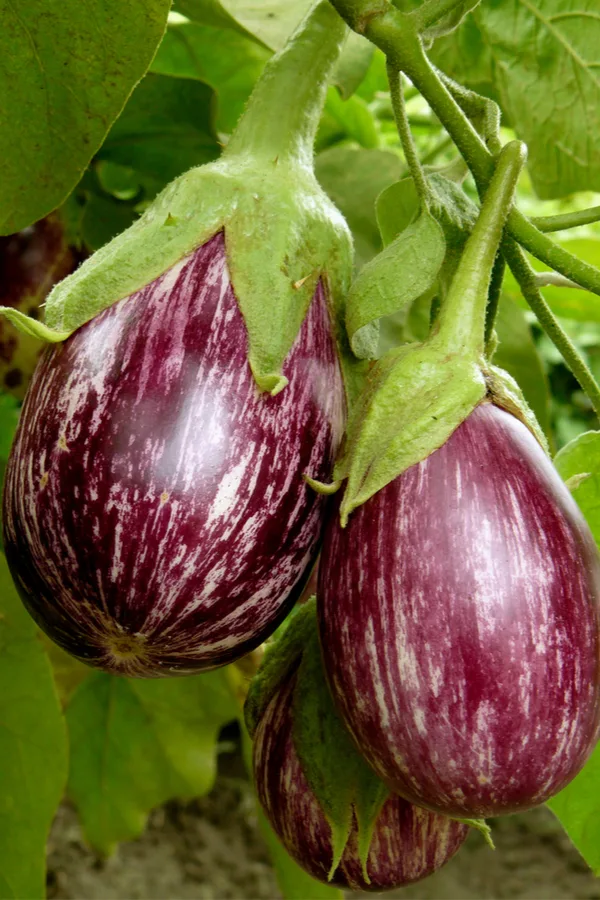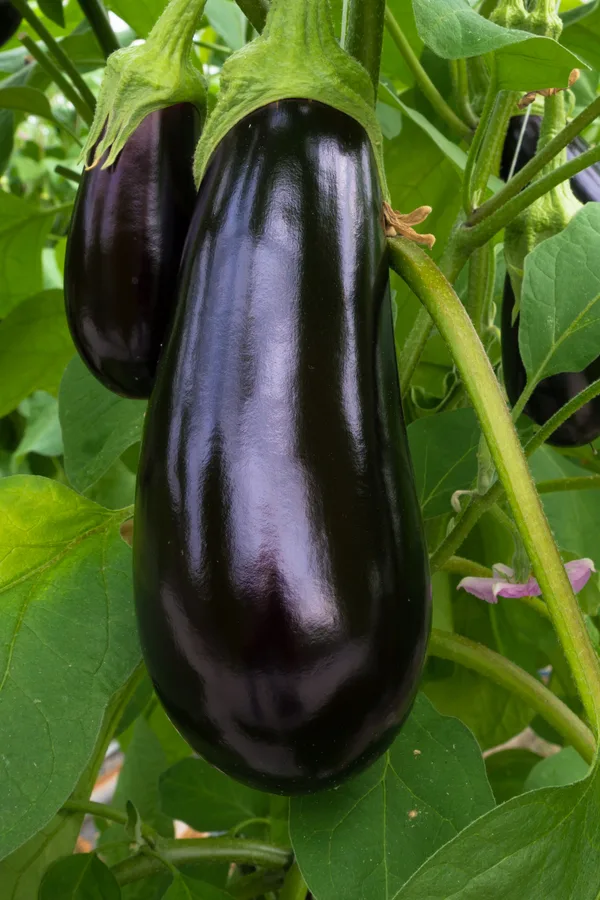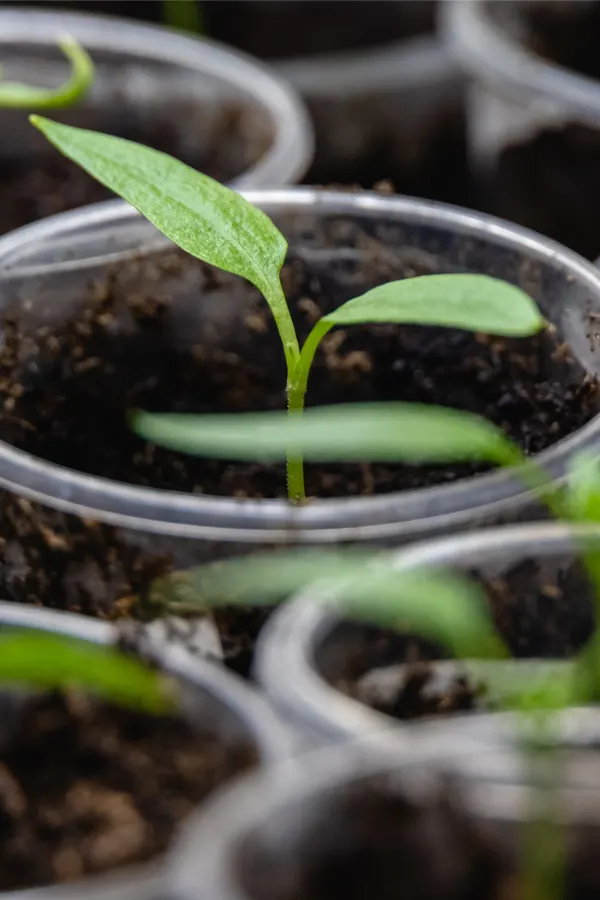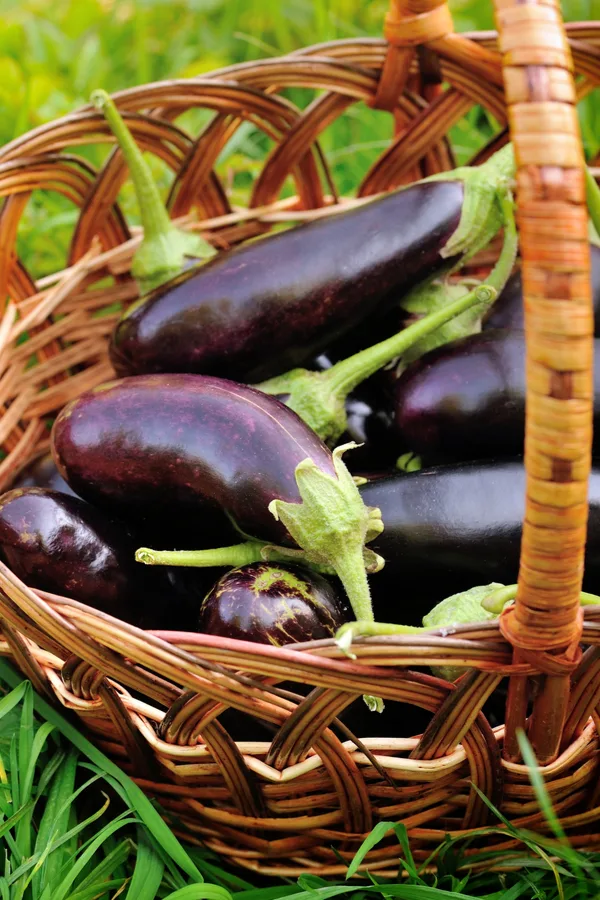When it comes to growing eggplant, there are a few tried and true secrets that can make all the difference between a bountiful harvest, or having plants that struggle to survive and produce.
Eggplant is quite the super fruit in terms of nutritional value (yes, it is technically a fruit and not a vegetable). Not only is this shiny vegetable high in antioxidants, it’s also loaded with a slew of nutrients.
Although low in calories, eggplant provides plenty of Potassium, Fiber, Vitamin A, Vitamin C and more. In addition, it is also thought to help with everything from helping your heart health, to aiding in digestion and improving bone health.

But beyond eggplant’s nutritional value, it’s also versatile and highly prized in the kitchen. Eggplant flavors easily, and its firm meaty inside is great for grilling. Even better, it can be used in a wide array of dishes, casseroles and more as well.
But maybe best of all, it looks great growing in the garden. Eggplant, with it’s large leafy foliage and bright fruits hanging can be quite the looker in the garden. With that in mind, here is a look at how to plant, grow and harvest eggplant with success!
Growing Eggplant – The Secrets To Success
Location
Like fellow members of the nightshade plant family, eggplant needs full sun to develop and produce. One of the biggest secrets of all for growing eggplant with success is to give it plenty of light.

Plant in a location that receives a minimum of 6 to 8 hours of sunlight each day, the more the better. Make sure when planting that other vegetable plants will not hinder its sunlight as it grows.
With this in mind, keep away from crops such as sweet corn or pole beans. These crops soar high into the sky as mid-summer approaches, and they can easily shade the eggplant.
In addition, always rotate your crops from year to year to prevent blight and other disease that can affect eggplant. This includes replacing the soil each year when growing in containers.
Pick The Right Variety For You
Selecting the right variety for your space is another big secret to success with eggplant. Standard heirloom varieties such as Black Beauty are excellent for larger garden spaces. Space plants 18 to 24″ apart to allow for good growth.

Smaller varieties such as Hansel Hybrid are great for raised beds or containers. There are also a few Japanese varieties of eggplant that produce more slender fruits. These are good for either and are also a great choice for cooler climates.
Soil Preparation / Planting
Eggplant requires rich, nutrient-filled soil to mature and produce a viable crop. Amend the planting hole prior to planting with a generous amount of compost. This not only provides a good base of nutrients, but also help retain moisture in the roots.
Eggplant can be grown directly from seed or with transplants. If you happen to live in a cooler climate, transplants can help you get a jump on the longer maturation times.

Depending on the variety, eggplant can take anywhere from 75 to 110 days to produce from seed. For those with a shorter growing season, transplants will reduce that time frame significantly. If you live in a climate that warms up early and stays warm late, you can stagger plantings to have two crops.
Whether planting from seed or transplant, eggplant needs warm air and warm soil to germinate and grow. Wait until the soil temperature is at least 65 to 70 (F) degrees before planting. It is usually safe once nighttime temperatures do not drop below 50 degrees.
Planting too early in the season can result in plants rotting in the soil, and lagging behind in growth.
Maintaining Plants In Season – Growing Eggplant
Eggplants require a consistent source of water to produce a sizable harvest and non-bitter fruit. Plants should receive at least 1″ of rainfall or watering per week throughout the growing season.

Eggplant benefits greatly from a slow and steady boost of nutrients. Without additional nutrients, eggplant will often lag in both fruit production and maturity times.
Fertilize plants every 14 days with a light solution of liquid organic fertilizer to boost root growth and blooms. Compost tea, worm casting tea, or a commercial high quality organic fertilizer are all excellent choices.
When fertilizing, it is better to give lighter doses every few weeks than a few heavy doses. Dilute liquid fertilizers with water to about half strength to keep the dosage light and steady.
Fertilize in this method for about the first eight to ten weeks, then allow the plant to ripen and produce on it’s own. Too much late-season fertilizer can result in more foliage growth than fruit production.
Harvesting – Growing Eggplant
Eggplant will become woody and bitter if left on the plants too long. Harvest fruit on the smaller side for best flavor, texture and taste.
If the skin is bright, shiny and firm, it is time to pick! And keep on picking too – eggplant will continue slow production of new blooms if too many fruits remain on the plant.

Depending on the variety you grow, you may need to provide a bit of support to your plants in the form of a stake or small trellis. This will also help to hold up the branches that become heavy under the weight of the fruit.
For more great articles on growing in the vegetable garden, check out our Garden Care category on the blog. Here is to growing eggplant this year in your garden!
This Is My Garden is a website dedicated to spreading the love and knowledge of gardening around the world. We publish two new garden articles each week. This article may contain affiliate links.
